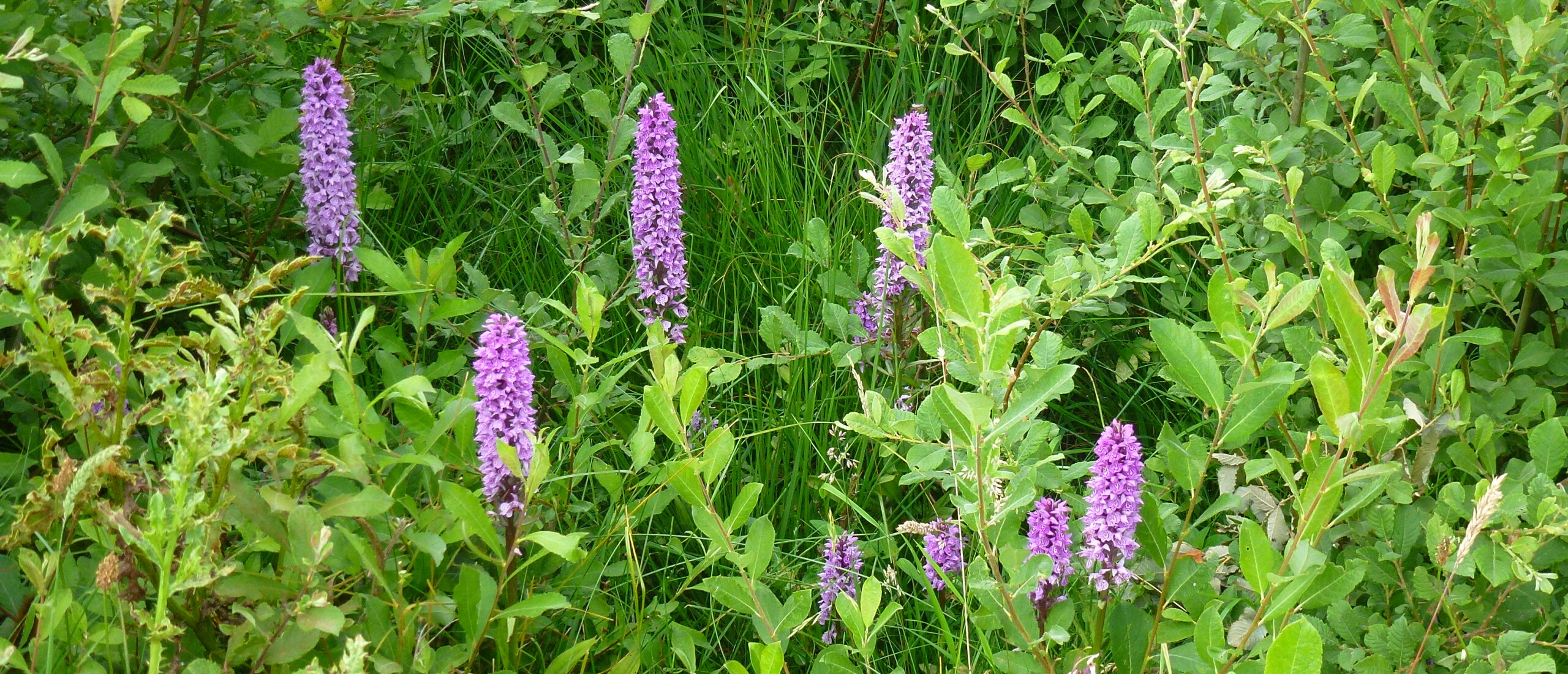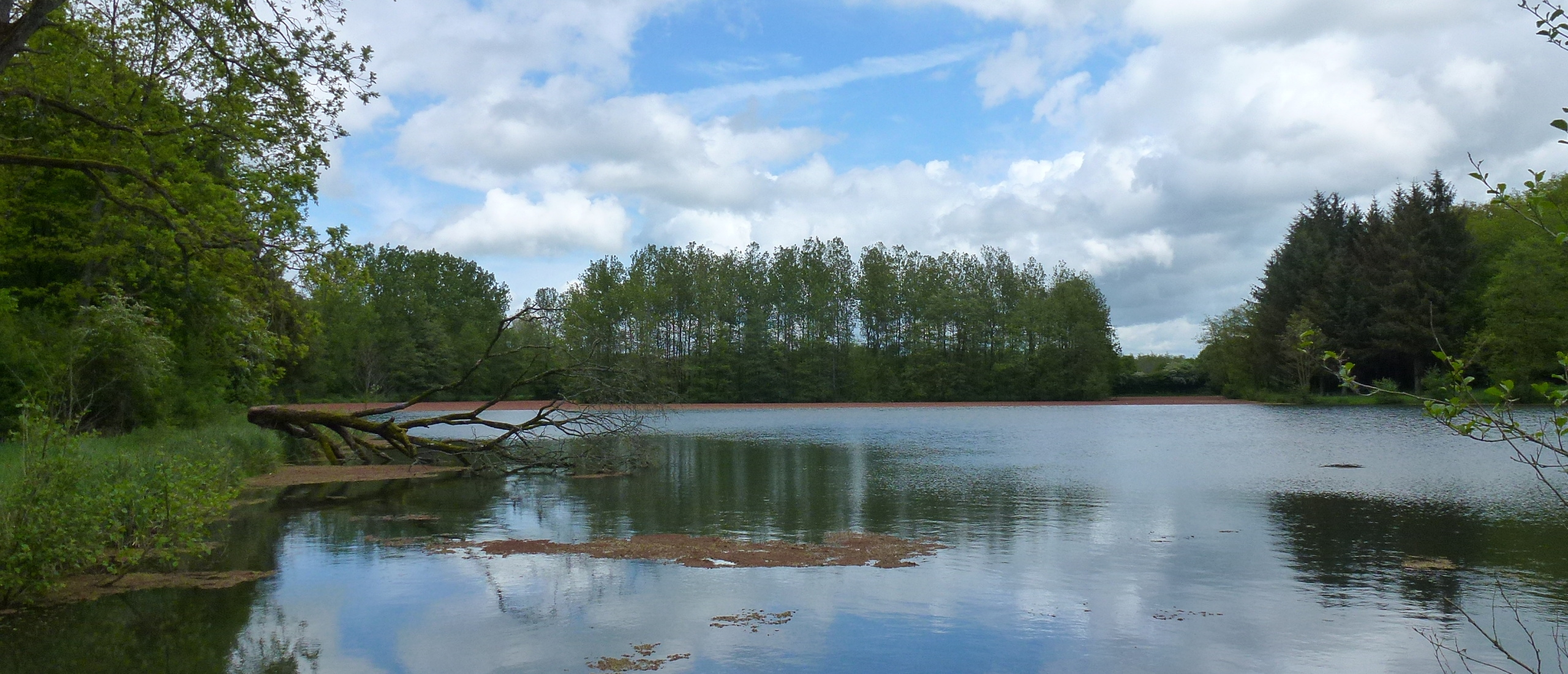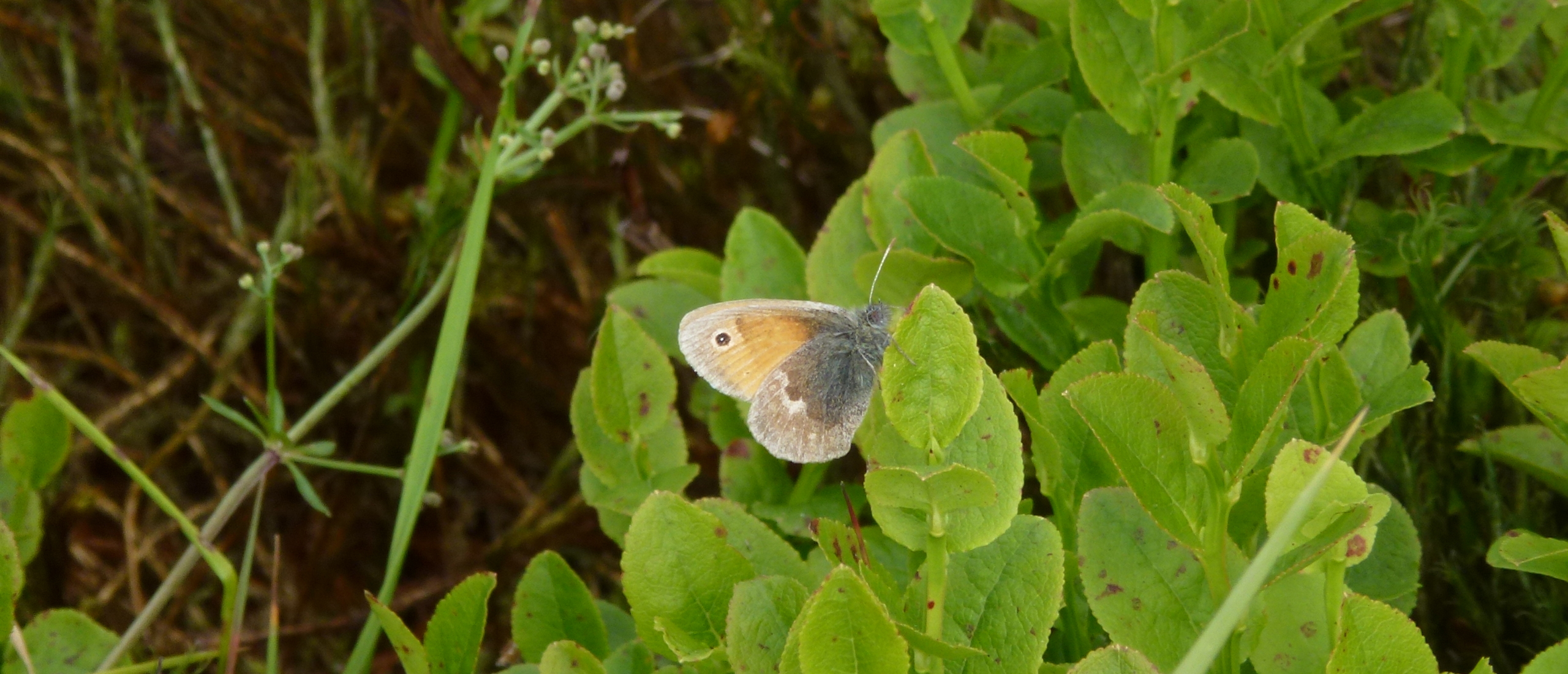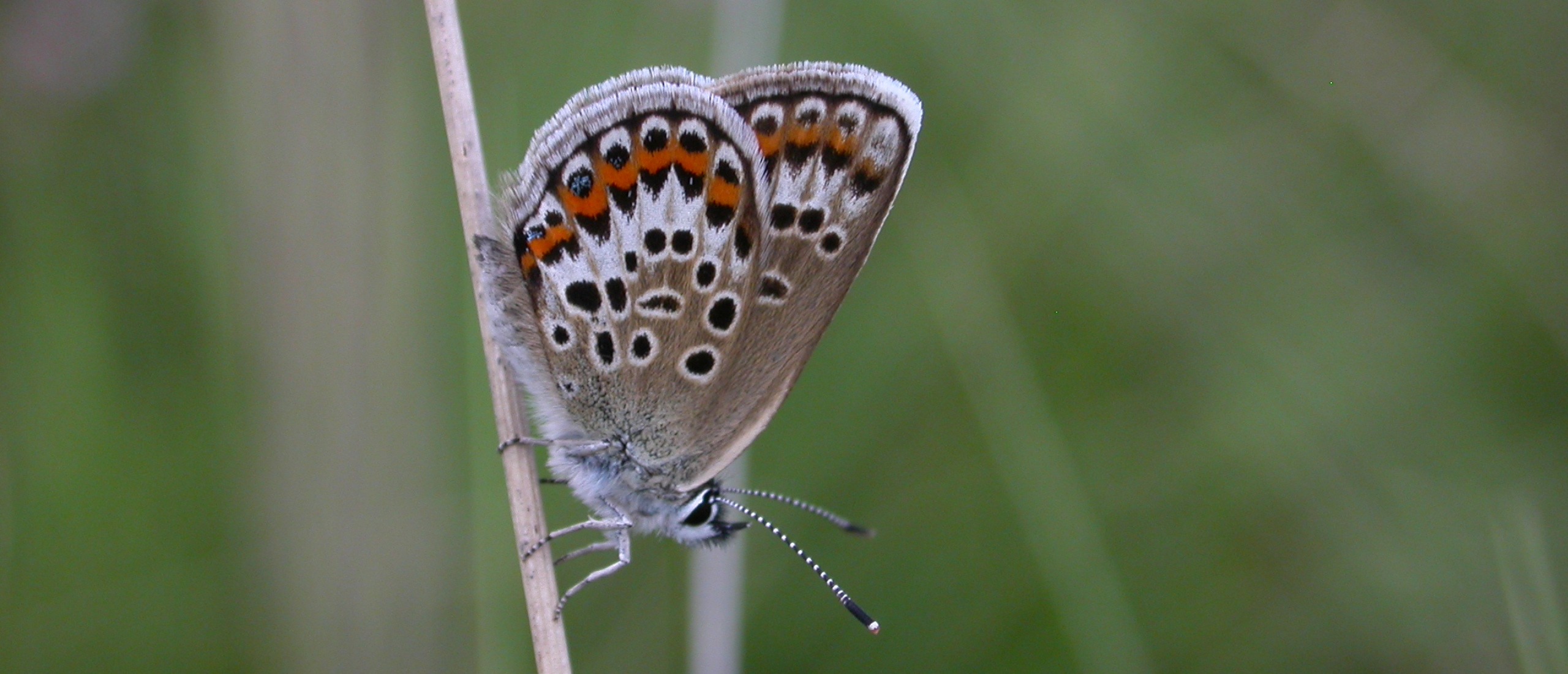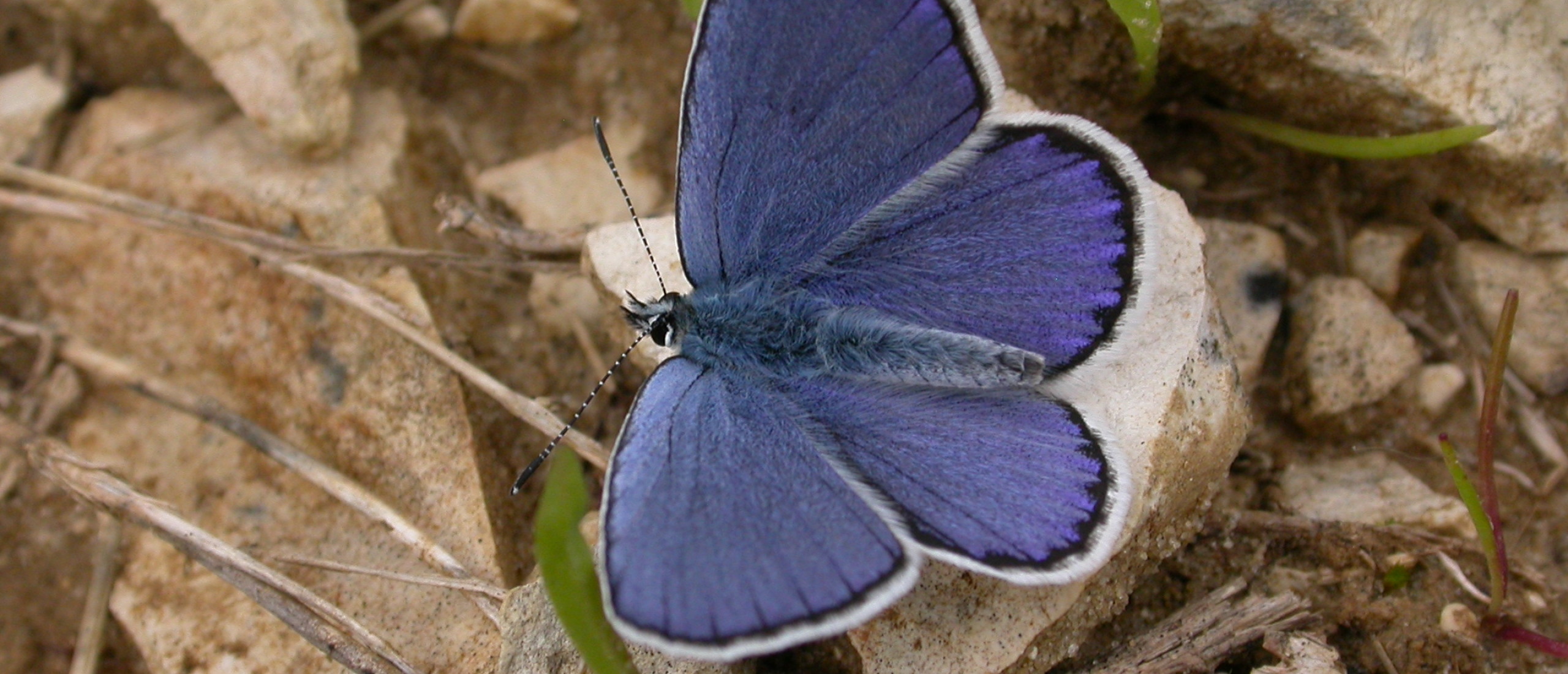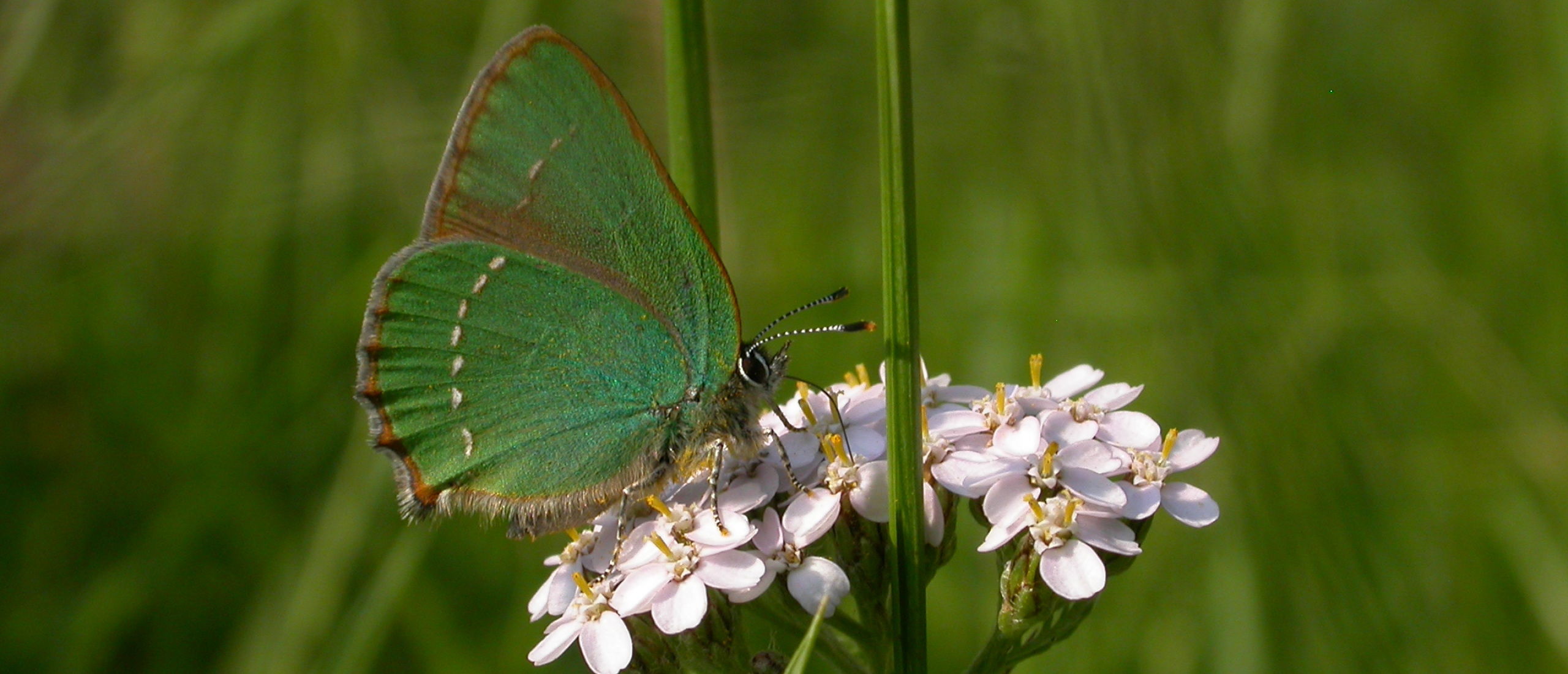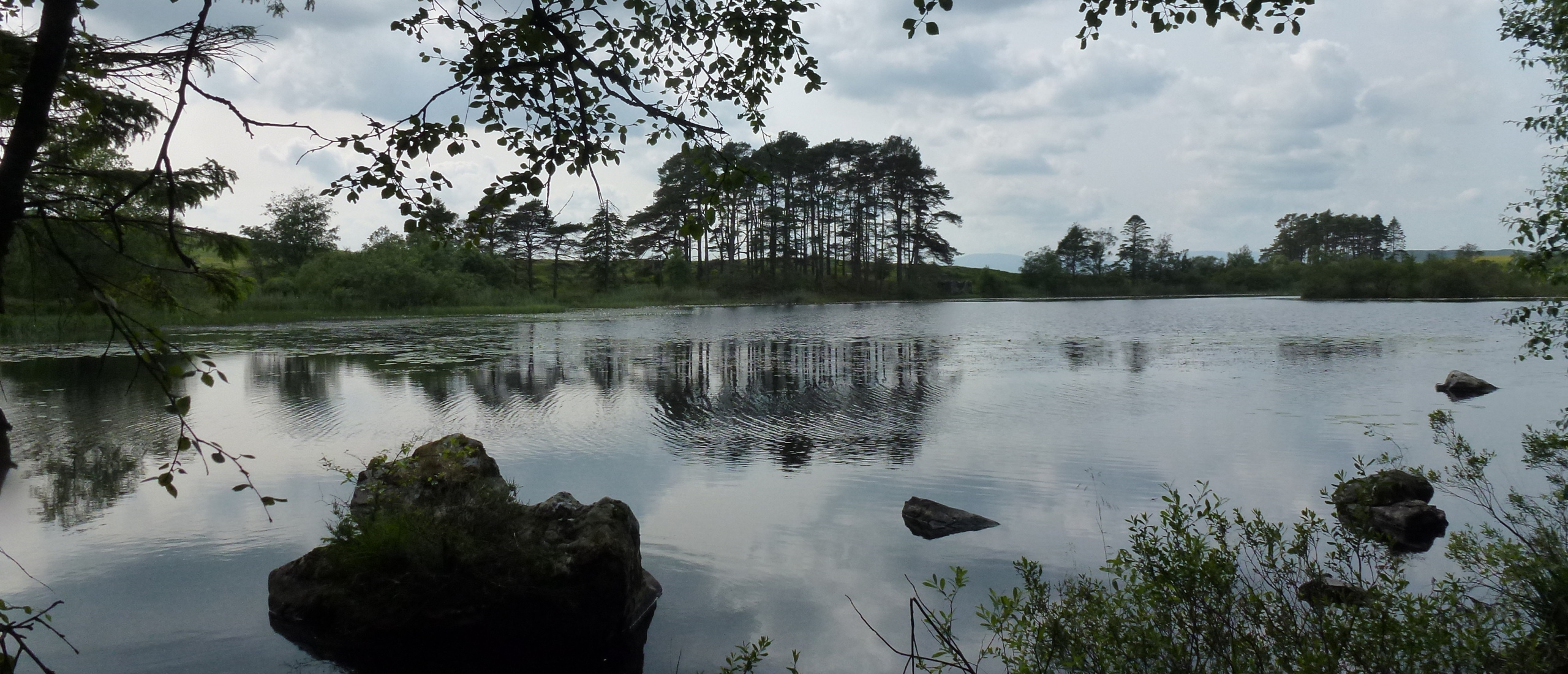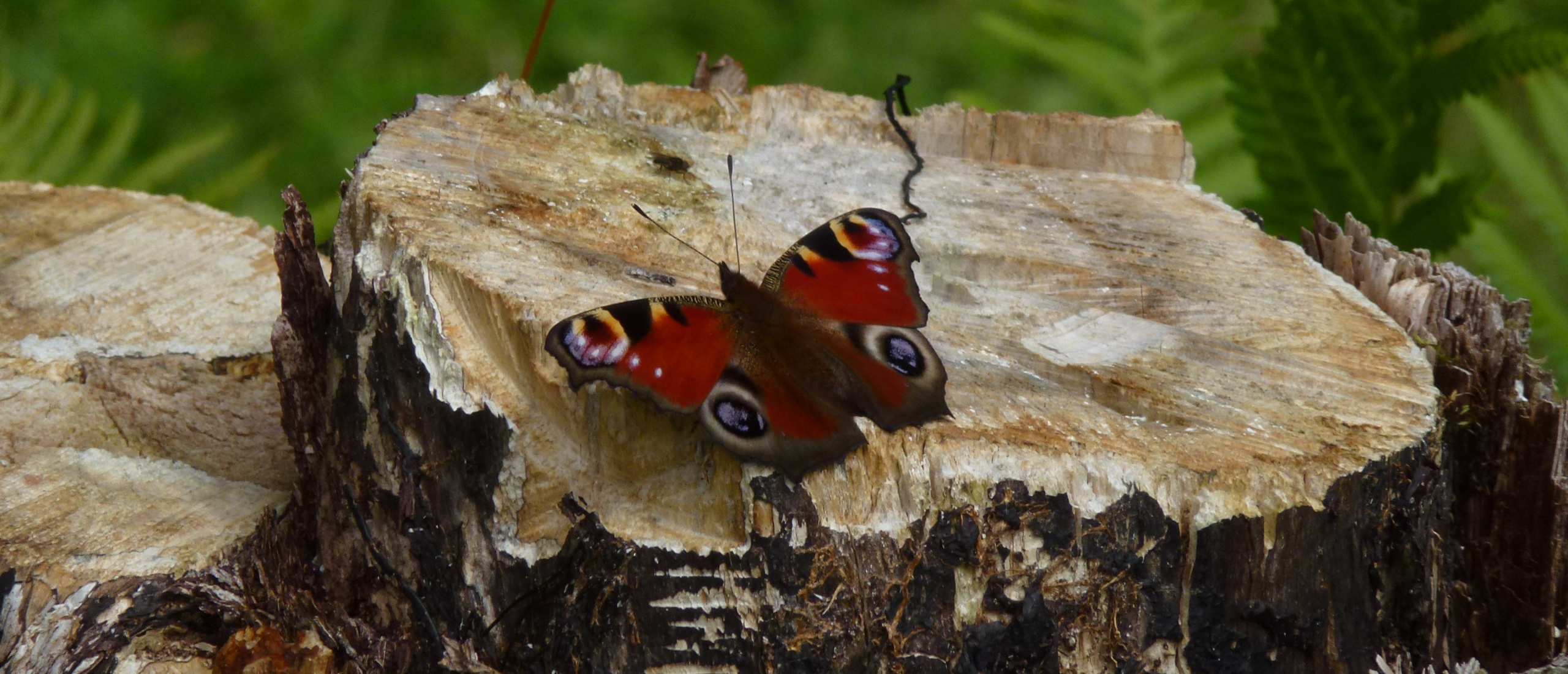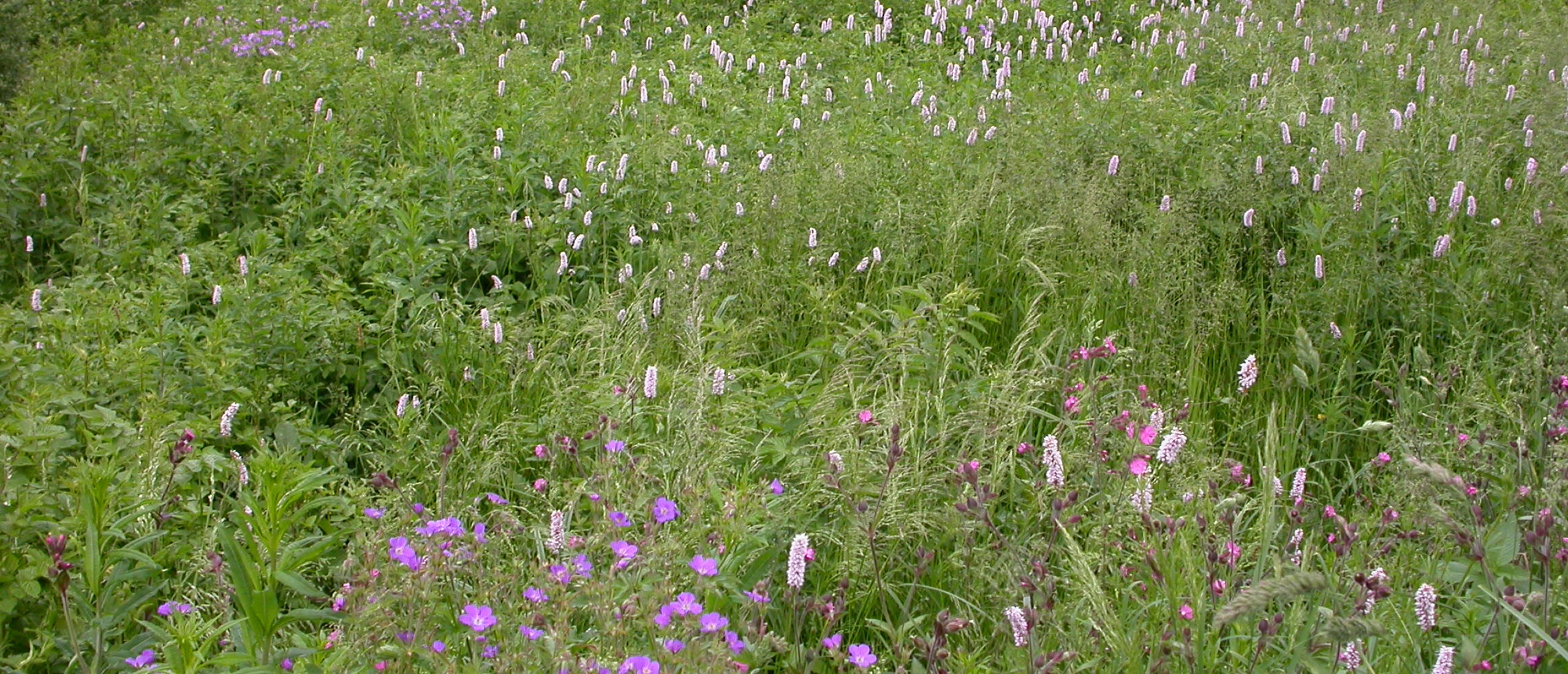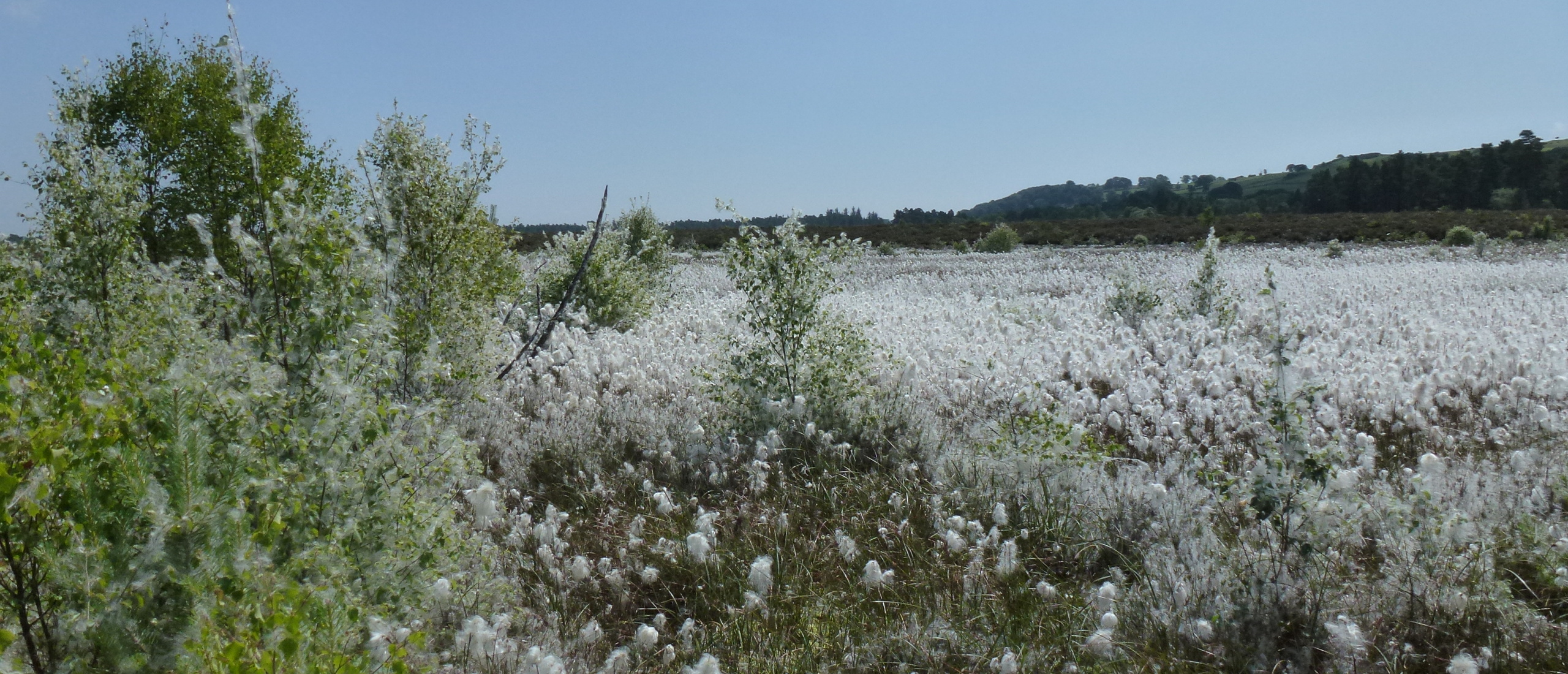
I take it all back - well, almost! Following my disparaging remarks about butterfly-watching in Scotland, and about the climate, I find myself having to eat my words! On the way home from the ferry terminal in Newcastle, I stopped at a boggy reserve near Dumfries, which I knew held another species which I would have looked for at its (almost) only site in the Netherlands, but did not manage to squeeze in a visit. Arriving at the reserve car park in temperatures approaching 30 degrees and blazing sun, I was first pleased to start my 2013 Scottish butterfly list with numerous Ringlets, Aphantopus hyperanthus, and two Large Skippers, Ochlodes venatus, the latter of which only occurs in the south-west of the country, and which I missed last year. I then ventured through some pinewoods, and came out into what looked like a snowfield! The cotton grass was turning the entire place white, an extraordinary sight.
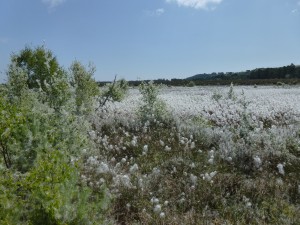 The cotton grass looked like snow
The cotton grass looked like snow
This area was formerly used for small-scale peat extraction, but is now a well-protected reserve, although removal of young birch and pine saplings is a constant struggle. I met a man who told me that he used to walk and play here as a child during the War, and he could remember the peat cutting going on, all done by hand. Luckily this magical place has escaped the fate of a similar bog at Eastriggs, near Gretna, which is in the process of being completely decimated by peat extraction for the garden industry. The moral of the tale is, FOR PEAT'S SAKE DON'T BUY PEAT!!!! At first there seemed to be nothing moving, and the heat shimmer above the bog made scanning with binoculars almost useless. However, eventually a medium-sized, rather drab-looking brownish butterfly fluttered by - my target species the Large Heath, Coenonympha tullia. This species has suffered heavily across Europe in the face of the destruction of peat bogs, and many of those bogs that do survive are no longer suitable as they have become too dry. Here, the drainage channels have been blocked, allowing the water level to rise again, which in turn provides ideal conditions for the Large Heath's larval foodplant, cotton grass.
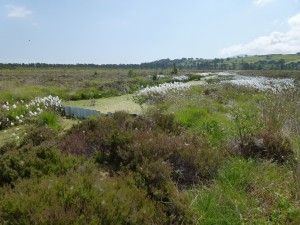 A channel reblocked to allow the water table to rise
A channel reblocked to allow the water table to rise
Large Heaths are notoriously difficult to photograph. They fly for extended periods above the extremely rough and boggy terrain, and then land, usually in an inaccessible spot. By the time one has plunged through the tussocks, they have flown on again. I tried to photograph them with my Panasonic Lumix camera, but the autofocus focussed on the surrounding grass stems. I managed to obtain a few passable record shots with the 300mm lens on my Nikon D70s, but they are nothing to be proud of.
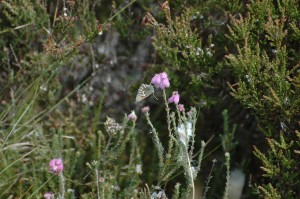 A distant Large Heath nectaring on Cross-leaved Heath flowers
A distant Large Heath nectaring on Cross-leaved Heath flowers
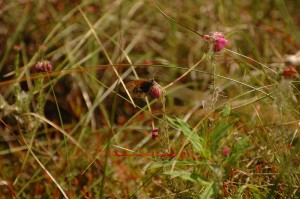 There is a Large Heath in there somewhere!
There is a Large Heath in there somewhere!
By the time I finally retreated from the sun (such a rare experience in Scotland, and then I complain about it!), I had seen at least 25 Large Heaths, showing that on this site at least, the species seems to be thriving. But for its sake and the sake of other bog inhabitants, DON'T BUY PEAT!!!2013 Butterfly list as of 12th July: 66 species2013 Scottish list: 3 species


